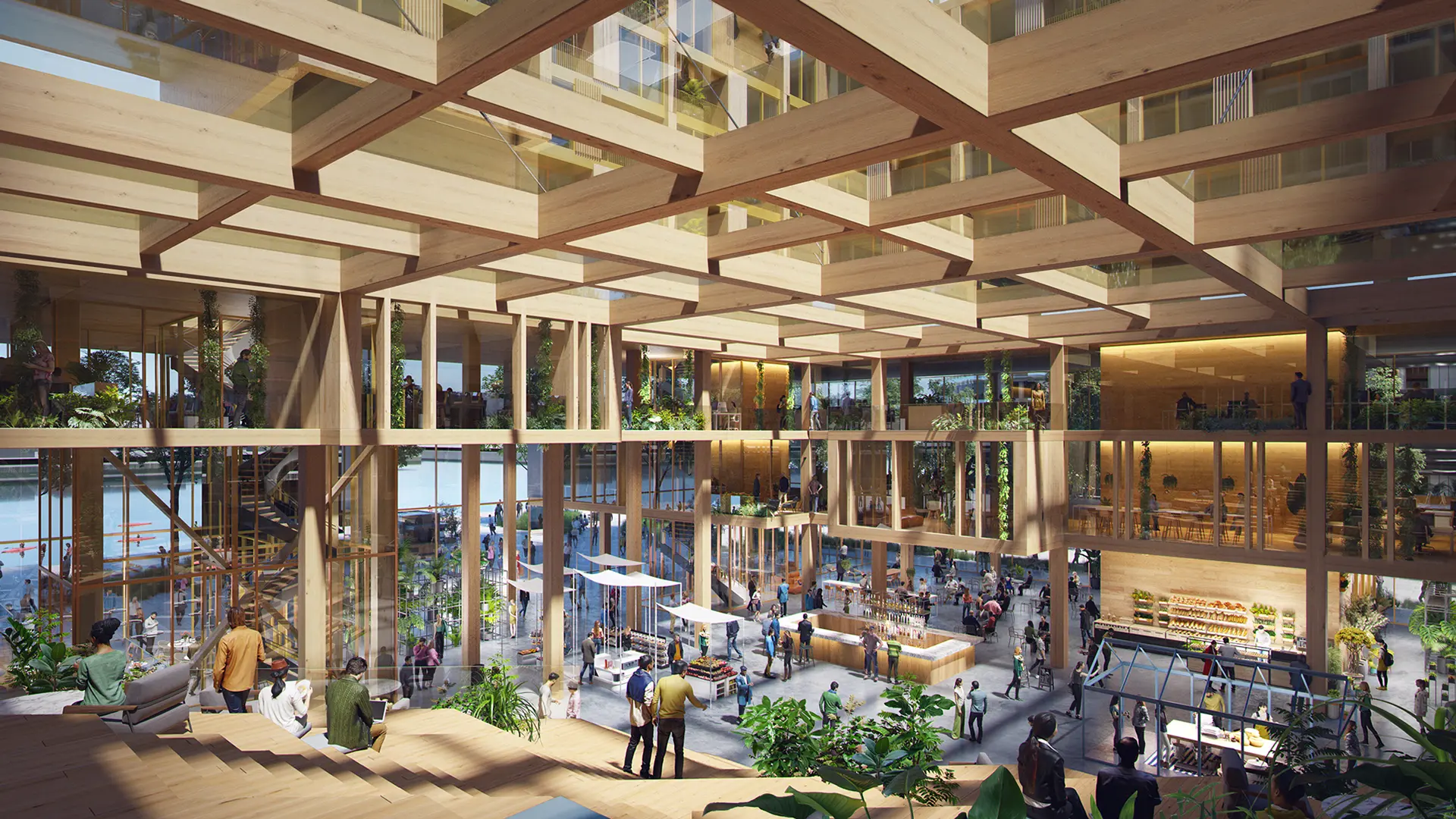Debunking myths about timber construction

In a market dominated by concrete and steel structures, wood is woefully misunderstood. Marred by tales of city-demolishing fires and outdated ideas of the construction and looks, timber architecture these days comes with a disproportionate explanation and disclaimer. It doesn’t need to be – here’s why.
We constantly live and move in the shadow of concrete and steel, its presence practically ubiquitous in our private, public, and work lives. Carried in during a wave of near blind belief in the benefits of technological progress, steel and concrete’s dominations has been seriously challenged by the current climate crisis. Despite the well documented safety, strength, and longevity of wood and its potential to become a viable alternative, for some, the thought of a timber buildings still conjures images of firetraps and deforested landscapes. Claims that wooden buildings are dangerously combustible and contribute to deforestation, therefore, require closer inspection.
Pushing Against the Grain
Perhaps the most enduring myth of all is that wood is more susceptible to fire than conventional building materials. All buildings, wood or otherwise, must meet minimum fire safety requirements and wood has consistently outperformed in this respect. Timber logging is neither inherently unsustainable nor ecologically destructive. In addition to being less carbon intensive to produce than concrete and steel, wood sequesters carbon for the entire duration of a building’s lifespan. The regrowth rate of forest in Europe and the USA means that timber can still be sustainably sourced without depleting forests, all while being relatively quick to renew.
Neither is wood a fragile material that is unsuitable for the large-scale apartments and office buildings necessary in today’s cities. In a comparison of its strength to weight ratio, structural wood beats steel by 20%. It is durable and long-lasting, with a virtually unlimited lifespan in the right conditions. Within the dry conditions of a building structure, wood can last for centuries and even in a rainy Norwegian climate, wood cladding can last up to 60 years. A temperate climate, or any other climate, is not a disqualifying factor for building wooden structures.
For all the technical advancements in construction methods and materials over the last century, wood remains the most practical. Assembled from prefabricated panels, timber structures are unbeatably fast and easy to build. Luckily, this is not news to everyone and in several Northern European countries, wood construction has already achieved considerable support among municipalities and developers. The rapid developments in timber construction have outpaced the global acceptance of this age-old building material. All that is required now to usher in this new standard of wood construction is a cultural shift in how we design our cities.



